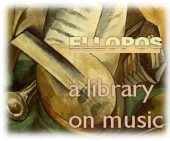| News Guides Performances What Is Music? | ELLOPOS |
 |
You are here > |
|
|
3. The RadicalsPérotin le GrandIntroduction of a chromatic style, close to modern tonality. Developed and imaginative polyphony. Improvement of musical notation (notes acquire an analogical indication and 'mathematical' accuracy of duration. Guillaume de Machaut (1300-1377)The first composition of the liturgy, where the different parts (Kyrie, Gloria, Credo, etc) form a whole and a unity. The harmonical (vertical) elements gain precedence over contrapuntal (horizontal) interplay.
Palestrina (1526-1594)(Maybe trying to be more traditional) Palestrina ended up to the radical achievement of transforming voice itself (a capella) to a highly interpretative instrument.
Monteverdi (1567-1643)Discord becomes an essential element of harmony. A start (or heart) of romanticism in music - which is not irrelevant with the turn to the Greek myths, so eager in him. Here begins the Opera. Schütz (1585-1672)Music becomes so subtle and able, that it tries to express Everything. Each and every sound, each and every chord, becomes a complete but not isolated entity. Lyricism at its purest! Ellopos Guide to Classical Music: Back to the Table of Contents Reference address of this text: |
||||
|
|
||||



